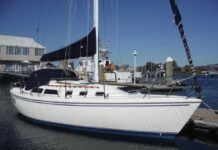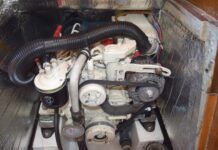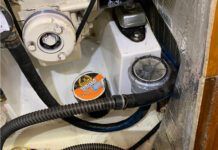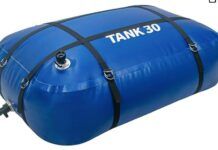From the weekend sailor whose boat is stored a few miles away to the full-time cruiser heading inland for a few days of exploring, we all wonder just what our boat is up to while were away. Is it sinking at the dock? Has some wiring MacGyver-ism started a fire? Did the mooring bridle fail, or is some miscreant breaking in to steal that new radio? There are a number of boat monitoring systems available to help soothe the worried mind of a nervous boat owner. However, high initial costs and monthly service fees 288 combine to make many of them too expensive for the average sailor to swallow. Maine Maritime Academy graduates David Jacques and Russel Sirois aim to change that with their remote vessel-monitoring service, “Boatsense.” “Boatsense has eliminated the complex network of satellites, technicians, keypads, and screens that fail in the harsh marine environment,” Jacques explained. “All you need with Boatsense is the cell phone you already own.” Boatsense is an owner-installed, sealed plastic module about the size of a deck of cards that uses cell-phone signals to alert boat owners when something goes awry. Once activated, it monitors bilge-water level and battery voltage and will send text messages to as many as three cell phone numbers with an event-specific message (High Water, Battery Low) should a problem occur. Boatsense can also monitor up to three additional alarm systems, such as smoke, heat, or theft. The GPS-equipped Boatsense (Boatsense+) provides drift alarms and coordinates and can be set to alert you via cell phone should your vessel move outside a set perimeter (an excellent feature to assuage those fears of anchor dragging or mooring ball failures). In the event of boat theft, owners can call the boat and request its position; Boatsense will text back with the boats current coordinates. Boatsense should work anywhere your cell phone does. If you have poor reception at the dock or mooring, use an external antenna to boost the signal. Practical Sailor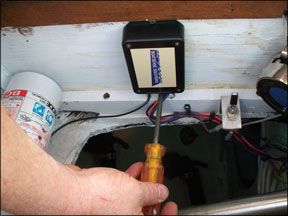
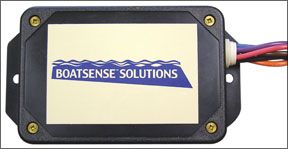
288
evaluation. The unit is mounted beneath the helm seat of a Union 36, where it is easily accessible and near the high-water alarm. Testers found the installation to be straight forward and fairly painless. Mounting (with stainless screws) and wiring the unit and a small, puck-shaped external antenna took about 1 hours.
We tested the units functions for bilge alarm, high-water alarm, and anchor drag (GPS). They all worked, and we received a notification text message within minutes.
Boatsense is distributed by Hamilton Marine of Maine (www.hamil
tonmarine.com, 800/639-2715). The basic unit sells for $599, while the Boatsense+GPS runs $999 (both prices include the first years cell subscription). An annual subscription for the units cell service is $180 for use in the U.S. and Canada. This provides up to 20 messages per month ($0.12 per message thereafter). (Outside the U.S. and Canada, the annual fees could be more.) At press time, external antennas cost extra, however, they likely will be included in the package price in the near future.





